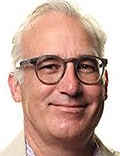Elite athletes who have run a mile in less than 4 minutes tend to live longer than the general population, according to a retrospective study.
The study adds to a growing field of research investigating the health effects of extreme exercise. Participants who ran a mile in less than 4 minutes lived an average of 4.7 years past their predicted life expectancy when matched for age, nationality, and sex (all runners were male). Previous research suggested that extreme endurance exercise may damage the cardiovascular system. Shorter, high-intensity sports are less investigated, however.

"The mile is unique," study author Mark Haykowsky, PhD, professor of nursing and research chair in aging and quality of life at the University of Alberta in Edmonton, told Medscape Medical News. Unlike long-distance endurance sports, which have been the subject of previous research, the middle-distance race requires a mix of aerobic and anaerobic fitness.
The study was published on May 9, 2024, in the British Journal of Sports Medicine.
No 'Reverse J?'
English neurologist and athlete Roger Bannister ran the first recorded sub-four-minute mile 70 years ago. Intrigued by his feat, the investigators chose to study the first 200 people to accomplish it. These athletes completed the sub-four-minute mile 50-70 years ago and were born between 1928 and 1955. Subsequent competitors would be too young to show meaningful differences in longevity. Possibly for the same reason, greater longevity benefit was seen among athletes who completed the task in earlier decades.
According to the "U-shaped" or "reverse J-shaped" hypothesis, increasing exercise decreases the likelihood of cardiac events but only up to a point. Beyond that point, exercise may strain the heart and cause cardiovascular damage, leading to conditions such as atrial fibrillation and cardiac fibrosis. Yet some studies have conversely shown that some Olympians, Tour de France cyclists, and other elite athletes live longer than the general population, said Haykowsky.
The findings serve as a reminder of the health benefits of exercise, he added. "This is a unique data set" that only applies to a small percentage of people. What is considered vigorous exercise, however, is relative to an individual's fitness. For many of his patients, walking up a flight of stairs is near maximal exertion.
The study has significant limitations, such as the lack of knowledge about broader exercise habits and lifestyle, Haykowsky acknowledged. "But it's still remarkable that one snapshot in time [was associated with] greater survivorship later in life."
Lifestyle and Genetics
The study did not account for several confounders that may explain some of the longevity benefits. For example, genetics likely play a role in distinguishing sub-four-minute mile runners from the general population. The 200-person cohort included 20 sets of brothers, including six sets of twins.
The athletes in the study cohort may also be less likely to smoke or drink alcohol and have improved nutrition compared with the general population. In addition, elite athletes tend to be in a higher socioeconomic class, which is a key driver of long-term survival, said Kim Connelly, MD, PhD, a cardiologist and associate professor of cardiology at the University of Toronto, who commented on the study for Medscape Medical News.
Research on intense exercise is important because "we have never seen so many people engaged in recreational exercise at a higher level," such as marathon running, Connelly said. But the study requires "nuanced" interpretation, given its caveats and the wide range of what may be considered "extreme" exercise.
Connelly considers the finding "reassuring" but only one piece of the puzzle. To gain the whole picture and guide clinical care, experts must put together many studies on various sports, considering as many confounding factors as possible. Future research and recommendations should consider factors such as age, sex, and whether exercise habits are continuous or intermittent over a person's lifetime, he said. "There's never going to be a one-size-fits-all recommendation."
Missing Population
Commenting on the study for Medscape Medical News, Alexandra Coates, PhD, an assistant professor of exercise physiology at Simon Fraser University in Burnaby, British Columbia, said it adds new evidence on extreme exercise from an intensity perspective. "Most other papers are looking at prolonged exercise" like ultramarathons and other endurance sports, said Coates, who is also a former elite triathlete. "These athletes were training and racing at very high intensities."

But a key population may be missing in this and other studies, said Coates: Athletes who train for but are unable to complete the activity. "Maybe that was because they had some of these cardiovascular symptoms," she said. While those who complete the sub-four-minute mile live longer, there may be another group of athletes who are dying earlier. In the future, she hopes research will target training groups to address this issue.
In general, the health effects of extreme exercise remain an open question, according to Coates. Many studies show that greater fitness increases longevity. "On the flip side, we have a lot of cross-sectional data that show that elite athletes also have more cardiac fibrosis and arrhythmias," she said. Other studies have found that lifelong athletes tend to have significant calcification of the coronary artery, but that the calcification tends to be stable and less likely to cause a heart attack and stroke. In short, "you live longer, and this might also be causing some damage."
The study was conducted without external funding. Haykowsky, Coates, and Connelly reported no relevant financial relationships.
Gwendolyn Rak is a health reporter for Medscape based in Brooklyn, New York.

